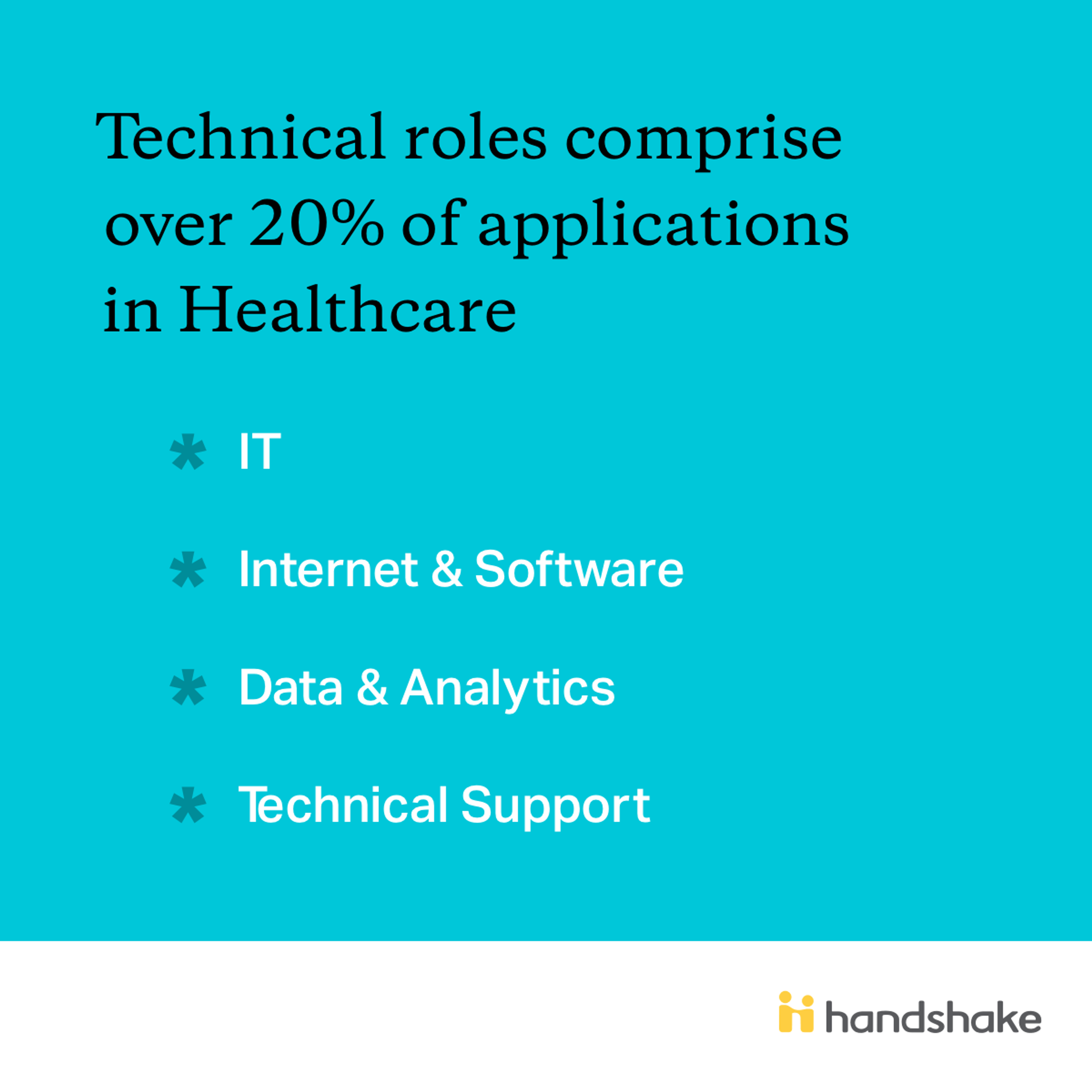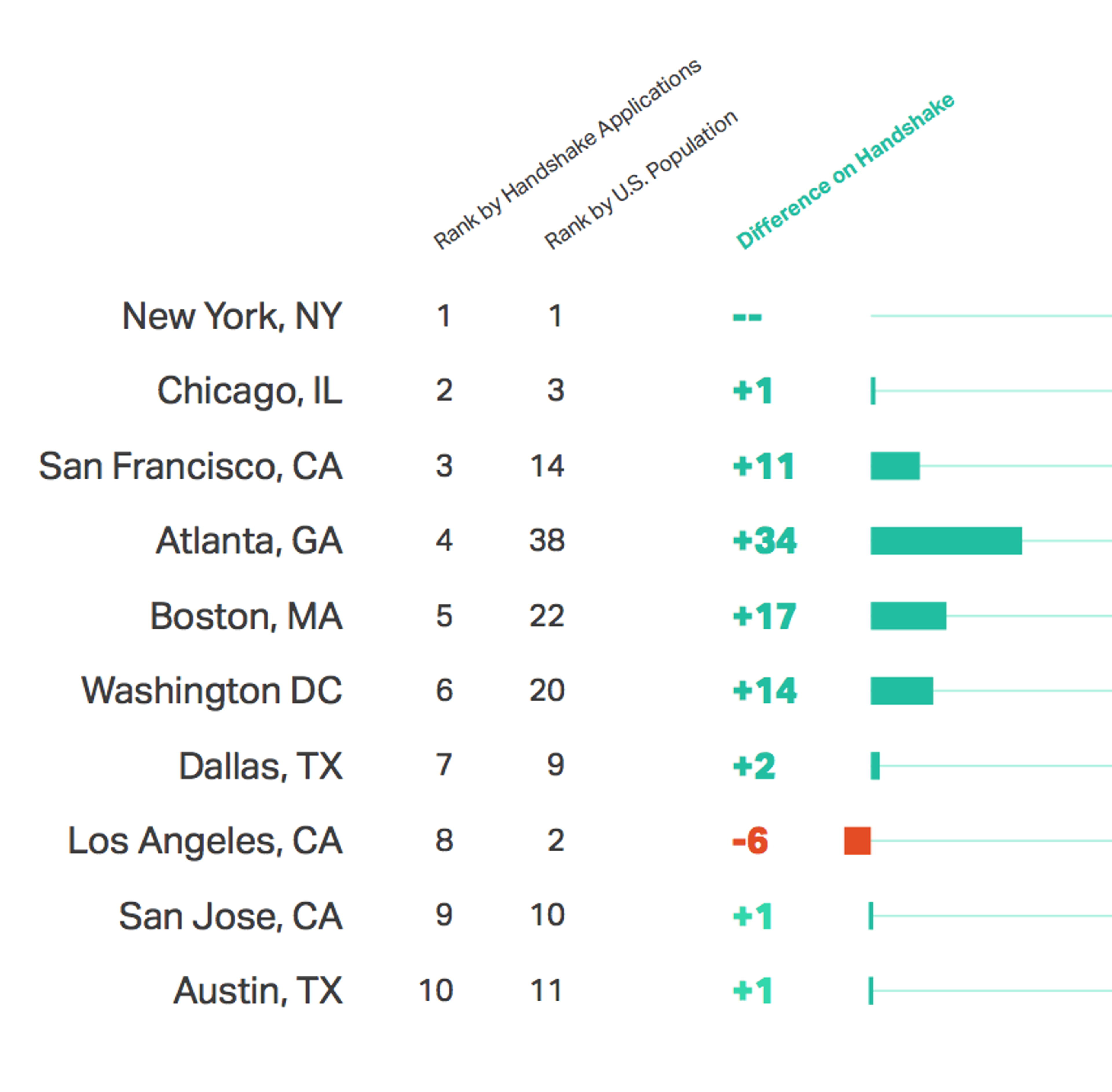By Garrett Lord | CEO & Co-Founder of Handshake
Editor’s note: Our second annual Campus to Career report is out! Read up on the latest trends shaping early career talent recruiting today, plus key takeaways from Handshake’s CEO Garrett Lord.
Every day on Handshake we see students discovering and connecting with employers in pursuit of that coveted post-graduation job. It’s no secret that today’s college students are filled with passion, creativity, and most of all — determination. They’re ready and eager to dive right into their careers. At Handshake, we’re proud to power the career search for students on campuses nationwide and play a small part in ensuring that every student has access to opportunity.
It’s why I’m excited to share with you our annual Campus to Career Report, uncovering what today’s college students want next. Here, we take a deep dive into key employment factors — from most popular employers, to which industries and roles are hottest with students, to where in the US students want to live, to students’ unique keyword searches and skills. These are all small indicators, the breadcrumbs that are showcasing how the workforce is changing as we welcome today’s graduates into the office.
Explore Handshake’s Annual Campus to Career Report
View from the Top (of Handshake)
As the leading college career platform, Handshake’s three-sided network provides a unique vantage point to uncover the trends shaping the entry-level talent landscape. Our analysisis based on Handshake’s community of 9 million college students and young alumni from more than 500 universities across the country and 250,000 employers — including 100% of the Fortune 500.
Our goal from day one of Handshake has been to eliminate barriers to opportunity for students — no matter where they go to school, what they major in, or who they know.
Breaking It Down
Our annual report is divided into three sections that Handshake will track year-over-year:
- Employers, Roles, and Industries
- Keyword Searches and Skills
- Top U.S. Cities and Talent Migration
1. Where are college students applying?

We break it down by employers, industries, and roles.
For example, we took at look at the entry-level talent landscape in the Healthcare Industry:
Surprisingly, just 14% of entry-level roles in the healthcare industry are healthcare service roles. However, more than, 20% of entry-level roles in healthcare are tech focused. Healthcare employers are now searching for students with skill sets in IT, internet & software, UX and UI design, and data & analytics to strengthen the tech talent pipeline within the industry.
The healthcare industry is quickly catching up to the innovation of Silicon Valley to better serve patients and caregivers throughout every stage of care. What was once an intimidating, brick and mortar industry is now becoming user friendly and mobile focused — putting you one-click away from accessing your health records or finding a doctor. Today, places like the Mayo Clinic are leveraging Handshake to bring in a new crop of tech talent to the medical field.
“Health care delivery is a big, ugly problem that companies in the industry have been unable to solve, it might take companies that are better at innovation.”
Erik Gordon, a professor at the University of Michigan Ross School of Business
2. What’s top of mind for today’s students?
We dive into keyword searches and skills.

For example, searches for ‘Mental Health’ more than doubled on Handshake over the last 12 months.
Why, you ask? Good question. We see it as a combination of factors. The recent decrease in stigma — and increase in acceptance — surrounding mental health has sparked more conversations on how individuals can take better self-care both at home and at work. Today’s students want to work for a company that is inclusive and supportive of all aspects of their growth and development.
According to research by Lovell Corporation, Gen-Zers are more likely to gravitate towards mental health support in a professional environment. This is counter to their Millennial predecessors, who are more likely to prioritize professional development support (education, training, and career support, for example).
“Mental health is the next frontier of diversity and inclusion. 20% of employees at any given time will experience a diagnosable mental health condition, whether they know it or not.” says Kelly Greenwood, CEO of Mind Share Partners, a nonprofit that is helping employers develop more supportive cultures for those affected by mental health. Greenwood also serves as the editor-at-large of Thrive’s Mental Health at Work. “We’re at an inflection point around mental health awareness. Today’s students will help us evolve even faster when it comes to eliminating stigma in the workplace.”
Companies like Johnson & Johnson and Salesforce have taken the first steps in building a more supportive and inclusive culture for those impacted by mental health. By establishing a ‘Mental Health Allies’ Employee Resource Groups (ERGs) and providing free counseling resources — just like free gym memberships and workout groups — employees know that their employer cares about all aspects of their health — both mental and physical.
3. Where do today’s college students want to land post-graduation ?
We peel back the curtain on popular cities and talent migration.
It’s no surprise that cities like New York and San Francisco are among the top cities attracting talent. As home to Wall Street and Silicon Valley, these cities have unmatched drawing power that is attracting nearly a million applications a piece on Handshake.

Now, let’s dive into where the results that may defy expectations. On Handshake, we see the seedlings of larger migration trends to up-and-coming cities across the country. As many companies look to smaller cities and suburbs to relocate or open a new regional office, students are being drawn to new parts of the country.

Pittsburgh, PA: Over the last few years, Pittsburgh has been experiencing a Rust Belt Rebound, drawing attention (and new regional offices) from many big players in the tech industry like Uber and Google. As a result, the Steel City lands at #14 for cities receiving applications for entry-level jobs on Handshake.
Fun Fact: The self-driving car was born at Carnegie Mellon University — an early Handshake adopter — and the nation’s leading robotics school, in the late 1970's.
Palo Alto, CA: Located right in the heart of Silicon Valley, Palo Alto is among the top 15 cities receiving applications on Handshake. Despite a reported population of 65,000, Palo Alto is quickly attracting talent in masses that are comparable to the same numbers as West Coast cities like Seattle and San Diego. The Palo Alto HQ’d Tesla is among the top 5 employers receiving the most applications on Handshake.
Cambridge, MA: Despite not breaking the top 250 largest cities in the US, Cambridge falls within the top 20 cities receiving the most application from students on Handshake. While the assumption is that this is fueled by just Boston-metro schools, the reality is that we’re seeing interest from students across the country. As home to many up and company bio tech startups and MIT’s Kendall Square Initiative, Cambridge is quickly rising to become the Silicon Valley of the East.
Stay Tuned
We have many more insights to share from this year’s annual Campus to Career Report. Follow along over the upcoming weeks as we dive deeper into the trends and insights we see unfolding across the entry-talent landscape.
Thanks to Jonathan Stull.
